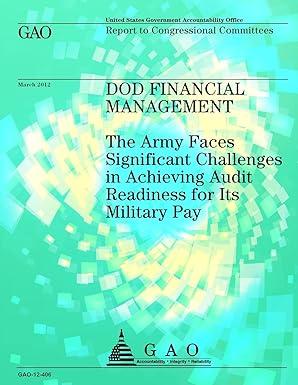Question
I need only help with 1D!! Cary Company manufactures two models of industrial componentsa Standard model and an Advanced Model. It has provided the following
I need only help with 1D!!
 Cary Company manufactures two models of industrial componentsa Standard model and an Advanced Model. It has provided the following information with respect to these two products: Standard Advanced Number of units produced and sold 20,000 10,000 Selling price per unit $ 150 $ 200 Direct materials per unit $ 40 $ 60 Direct labor cost per unit $ 30 $ 30 Direct labor-hours per unit 1.50 1.50 The company considers all of its manufacturing overhead costs ($1,346,250) to be fixed and it uses plantwide manufacturing overhead cost allocation based on direct labor-hours. Click here to download the Excel template, which you will use to answer the questions that follow. Click here for a a brief tutorial on Charts in Excel. Required: 1. Go to the tab titled Plantwide Approach: a. Create a formula that calculates the direct labor-hours in the denominator of the plantwide overhead rate (cell F3). Also, create a formula that calculates the plantwide overhead rate (cell F4). What formulas correctly calculate these two amounts? b. What is the plantwide overhead rate? c. Create the appropriate formulas (within cells B11 through D17) to compute the gross margins for the Standard and Advanced models as well as the company as a whole. What formulas correctly calculate the direct materials, direct labor, and manufacturing overhead for the Standard model? d. What are the gross margins for the Standard model (cell B17) and the Advanced model (cell C17)? e. Using Charts, create a pie chart that shows the percent of total manufacturing overhead cost allocated to each product using the plantwide approach. (Your instructor may require you to upload this file in Part 6). f. What percent of the total manufacturing overhead cost is allocated to the Standard model using the plantwide approach? The Advanced model? Carys production manager has suggested replacing the companys current cost system with an activity-based costing system that assigns all of the companys manufacturing overhead costs to four activity cost pools as follows (the company does not have any organization-sustaining costs or unused capacity costs):
Cary Company manufactures two models of industrial componentsa Standard model and an Advanced Model. It has provided the following information with respect to these two products: Standard Advanced Number of units produced and sold 20,000 10,000 Selling price per unit $ 150 $ 200 Direct materials per unit $ 40 $ 60 Direct labor cost per unit $ 30 $ 30 Direct labor-hours per unit 1.50 1.50 The company considers all of its manufacturing overhead costs ($1,346,250) to be fixed and it uses plantwide manufacturing overhead cost allocation based on direct labor-hours. Click here to download the Excel template, which you will use to answer the questions that follow. Click here for a a brief tutorial on Charts in Excel. Required: 1. Go to the tab titled Plantwide Approach: a. Create a formula that calculates the direct labor-hours in the denominator of the plantwide overhead rate (cell F3). Also, create a formula that calculates the plantwide overhead rate (cell F4). What formulas correctly calculate these two amounts? b. What is the plantwide overhead rate? c. Create the appropriate formulas (within cells B11 through D17) to compute the gross margins for the Standard and Advanced models as well as the company as a whole. What formulas correctly calculate the direct materials, direct labor, and manufacturing overhead for the Standard model? d. What are the gross margins for the Standard model (cell B17) and the Advanced model (cell C17)? e. Using Charts, create a pie chart that shows the percent of total manufacturing overhead cost allocated to each product using the plantwide approach. (Your instructor may require you to upload this file in Part 6). f. What percent of the total manufacturing overhead cost is allocated to the Standard model using the plantwide approach? The Advanced model? Carys production manager has suggested replacing the companys current cost system with an activity-based costing system that assigns all of the companys manufacturing overhead costs to four activity cost pools as follows (the company does not have any organization-sustaining costs or unused capacity costs):
Step by Step Solution
There are 3 Steps involved in it
Step: 1

Get Instant Access to Expert-Tailored Solutions
See step-by-step solutions with expert insights and AI powered tools for academic success
Step: 2

Step: 3

Ace Your Homework with AI
Get the answers you need in no time with our AI-driven, step-by-step assistance
Get Started


